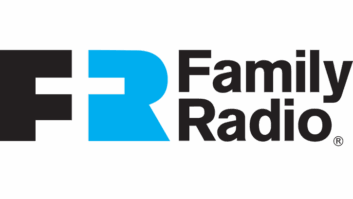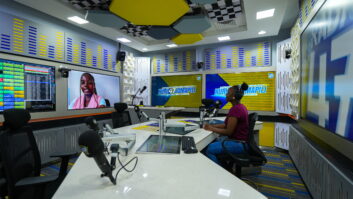(click thumbnail)iStock.comLooking at the numbers, radio sales are on the decline and the doomsayers are having a field day.
Unheard are those who have been cast aside by the beancounters, the unimaginative, the ones who stopped dreaming long ago yet still hold a position in a medium that screams for creativity, courage and a keen sense of spontaneity.
Others inside the tent but not in a position of decision-making shake their collective heads at the mentality and paradigms brought into the studio by “the suits.”
Deep tracks
In a recent column addressing musical duplication in radio offerings, Michael Roberts of Denver’s weekly publication Westword asked a local station “guru” about how his classic rock format tries to stand out in a crowded field. The “guru’s” response speaks volumes about the industry and how it supposedly reflects the culture of our time.
This enlightened soul said his station was different because, rather than just allowing two tracks from “Hotel California” in the mix, he allowed his hosts to play any track they wanted from that tired disc.
These days, that thinking passes for “ahead of the curve.”
Have such schmos ever listened to the angelic voice and songwriting genius of Arthur Lee?
Have they even heard “Forever Changes,” which Rolling Stone named the 40th best rock album of all time?
Fact is, for whatever lame reasons, the only time you’ll hear Lee’s distinctive voice and his group “Love” on classic rock radio is during weekly shows on Sunday nights, like “Little Steven’s Underground Garage,” hosted by E-Street Band guitarist Stevie Van Zandt.
Imagine the horror felt by the afternoon host of New York’s premiere classic rock station when one day in 2002 she received a call from Led Zeppelin’s Robert Plant, in town to participate in a benefit for Lee to help pay his medical expenses (he passed away several months after the benefit).
The station had no discs by Love, anywhere.
Plant did his best, talking up the life and musical achievements of Arthur Lee. Ticket sales for the benefit with a shoestring budget took off after that, and the event was a mild success.
The story of Arthur Lee is one tale of misery among many for artists and listeners alike, misery created by beancounters and cynics who have run radio into the ground. It leaves us to wonder how many artists and how much great music are left in the dust.
More than ready
If you believe in the concept of safety in numbers, however, the FCC is bringing hope.
Comments to the FCC are due July 15 on several proposals to increase station ownership diversity (MB Docket 07-294). One proposal the agency seeks comment on would expand the FM radio band by reallocating FM frequencies currently used by Channels 5 and 6 television. Many of these frequencies will become vacant in February when television converts to digital broadcasting. Under the plan, advanced by Mullaney Engineering, some 60 new FM channels could become available.
The alternative to this option is another idea floating in Congress that would place these frequencies up for auction to the highest bidder (in theory to help retire the national debt, but we are dealing with another kind of deficit with radio that adding more frequencies can only help to remedy).
It might sound crazy to add more frequencies to a “dying” medium. But all radio needs is an infusion of soul, imagination and genuine localism, which satellite radio can only dream of delivering. Remember what brought FM radio to its heights to begin with, when AM radio was still king and the FM signal was still unreliable.
With technically flawed signals, FM owners started paying peanuts to dreamers crazy enough to take to the airwaves with jazz, folk and then album rock, while top 40 ruled the AM side.
As FM momentum grew — bolstered by technical innovations like circular polarization, making the signal much more dependable — FM eventually became a cash cow. The beancounters arrived, tweaked “progressive rock” formats and you now hear the result.
What better way to reintroduce “inmates running the asylum” than 60 new FM channels to play with?
Is the populace ready? Oh yeah.








